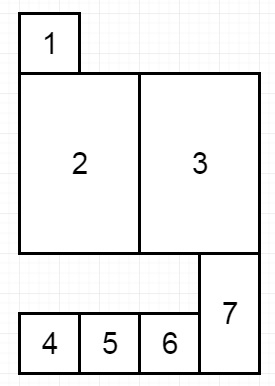
 Data Structure
Data Structure Networking
Networking RDBMS
RDBMS Operating System
Operating System Java
Java MS Excel
MS Excel iOS
iOS HTML
HTML CSS
CSS Android
Android Python
Python C Programming
C Programming C++
C++ C#
C# MongoDB
MongoDB MySQL
MySQL Javascript
Javascript PHP
PHP
- Selected Reading
- UPSC IAS Exams Notes
- Developer's Best Practices
- Questions and Answers
- Effective Resume Writing
- HR Interview Questions
- Computer Glossary
- Who is Who
Filling Bookcase Shelves in Python
Suppose we have a sequence of books − Here the i-th book has thickness books[i][0] and height books[i][1]. If we want to place these books in order onto bookshelves that have total width shelf_width. If we choose some of the books to place on this shelf (such that the sum of their thickness is <= shelf_width), then build another level of shelf of the bookcase where the total height of the bookcase has increased by the maximum height of the books we can put down. We will repeat this process until there are no more books to place. We have to keep in mind that at each step of the above process, the order of the books we place is the same order as the given sequence of books. We have to find the minimum possible height that the total bookshelf can be after placing shelves in this manner. So if the input is like − [[1,1], [2,3], [2,3], [1,1], [1,1], [1,1], [1,2]], and the self_width = 4,

then the output will be 6 as the sum of the heights of the 3 shelves are 1 + 3 + 2 = 6. Notice that book number 2 does not have to be on the first shelf.
To solve this, we will follow these steps −
- Create one array dp whose size is same as books, and fill this using infinite
- dp[0] := books[0,1]
- for i in range 1 to length of books – 1
- curr_height := 0
- temp := self_width
- j := i
- while j >= 0 and temp – books[j, 0] >= 0, do
- curr_height := max of books[j, 1], curr_height
- dp[i] := min of dp[i], curr_height + (dp[j - 1] if j – 1 >= 0, otherwise 0)
- temp := temp – books[j, 0]
- decrease j by 1
- return last element of dp
Let us see the following implementation to get better understanding −
Example
class Solution(object):
def minHeightShelves(self, books, shelf_width):
"""
:type books: List[List[int]]
:type shelf_width: int
:rtype: int
"""
dp = [float('inf') for i in range(len(books))]
dp[0] = books[0][1]
for i in range(1,len(books)):
current_height = 0
temp = shelf_width
j = i
while j>=0 and temp-books[j][0]>=0:
current_height = max(books[j][1],current_height)
dp[i] = min(dp[i],current_height +( dp[j-1] if j-1 >=0 else 0))
temp-=books[j][0]
j-=1
#print(dp)
return dp[-1]
Input
[[1,1],[2,3],[2,3],[1,1],[1,1],[1,1],[1,2]] 4
Output
6

